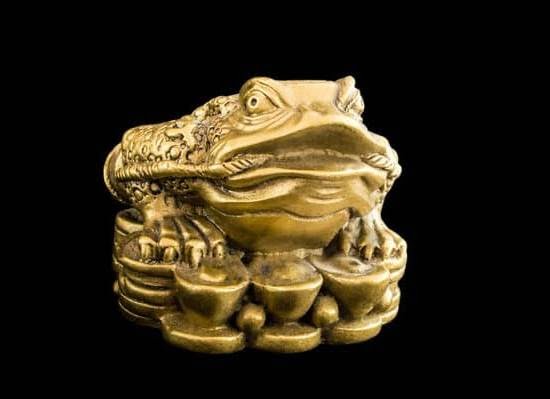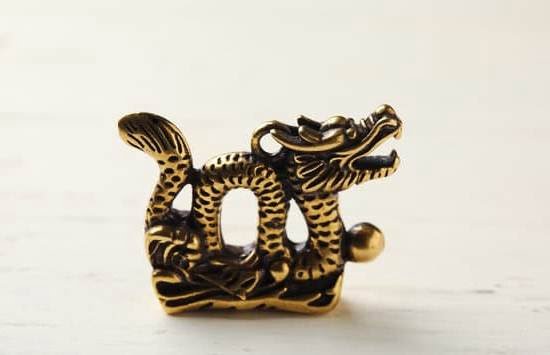Introduction
Feng Shui is an ancient Chinese practice that has been around for centuries. It is based on the idea that the placement of objects and colors in a space can influence how it affects a person’s wellbeing. To achieve this, practitioners focus on creating harmony between people, their environment and the energies of their lives. This is done through various principles including wind, water, colors and shapes, as well as energy flow called ‘chi’.
The primary principle of Feng Shui is creating balance and peace in a space. To do this, practitioners must identify areas with good chi (positive energy) and those with bad chi (negative energy). They use various techniques to create balance by directing good chi towards areas where it should be concentrated and blocking out any negative influences from other sources.
One such technique is the Five Element Approach which uses elements from nature (metal, wood, water, fire, earth) to restore harmony within a space. Colors play a crucial role in feng shui as they are believed to reflect different energies. For example, blue represents trust and friendship while red symbolizes power and ambition. These colors can be used to adjust the feeling of the room accordingly. Additionally, items such as mirrors are commonly used in Feng Shui to promote augmented positive energy flow throughout the space.
In conclusion Feng Shui is an ancient art which when practised correctly can bring improved health, happiness and wellbeing into your life by balancing its energies into harmony with your environment. Through creative techniques involving color theory, symbolism and energy flow we are able to attain our goal of restoring balance in all interior spaces we live or work within.
The Myths and Legends Surrounding Feng Shui
Feng Shui is an ancient practice developed over 4,000 years ago in China. It is based on the concepts of Yin and Yang, which suggest that everything can be measured, organized and balanced to maximize a space’s potential benefits.
At its core, Feng Shui seeks to create a harmonious balance between humans and their environment by using subtle changes in a home or office. Through this theory, one’s life can be improved through the arrangement of furniture and items within a room or structure.
The practice of Feng Shui has been shrouded in wisdom and mystical qualities throughout history. Many people believe that certain objects or colors have different energetic energies associated with them; therefore, arranging these items according to Feng Shui principles leads to improved luck and healthier relationships. Some people even think that rearranging furniture for Feng Shui will help them achieve wealth as well as restful sleep.
Another common belief regarding Feng Shui is that it works by creating energy pathways known as chi lines which extend from one side of a room to the other and represent pathways which receive energy from different directions in order to create balance in the area. Different elements such as wood, fire, metal and water are thought to be connected through these energy channels, creating powerful healing forces which can restore harmony when properly channeled within a living space.
Exploring the Principles of Feng Shui
Feng Shui is an ancient Chinese art of creating harmonious environments by placing objects in balance with the energies present in a person’s home or office. Feng Shui principles take into consideration the energy of the five elements (wood, fire, earth, metal, and water) and how they interact with one another. People need to understand these principles so they can design their environment to maximize these positive energies and eliminate any negative ones.
The five elements of Feng Shui interconnect with one another to create balance. Each element has a function that works together with the others to create harmony. For instance, wood supports fire to give us strength and creativity; earth supports metal for structure and stability; water supports wood for beauty and nourishment; fire strengthens earth for growth; and metal enhances water for wealth and fortune. To achieve good Feng Shui, all five elements must be balanced correctly in the environment so that positive energy can flow.
Feng Shui also takes into account areas like color, positioning of doors and windows, furniture location, mirrors placement—even the type of plants or sounds that are added to an environment. Colours should be used according to their combinations in terms of yin – yang representational system theory which reflects one’s emotions as well as physical energy level in a living space. A chaotic arrangement of furniture contributes little feng shui energy while a visually appealing arrangement brings life to any interior space creating more positive vibrations that are conducive to overall well-being. An excess of mirrors (placements) can cause too much ‘yang’ energy which could unduly affect its occupants energetically; hence it is important that mirrors be placed carefully. The location of items such as beds should be taken into account by making sure it aligns with what is known as “the bagua”, an octagon shaped compass divided into nine fields corresponding with different aspects suchas health , wealth,auspiciousness etc..If something like plants are to be included, it might help if certain species are positioned at appropriate locations depending on whether the intention is healthier-looking skin or improved wealth luck. If a house has noisy neighbours then installing soundproof walls could prove effective in blocking out excess noise pollution so long as they don’t disrupt any existing original architecturesonstructions deemed essential within the overall feng shui process.
Applying the Five Elements in Feng Shui
Feng Shui is based on philosophy dating back more than three thousand years. It is a way of using the environment to bring peace and harmony, while promoting health and prosperity. The Five Elements Theory forms a core part of Feng Shui and comprises Wood, Fire, Earth, Metal, and Water elements which are used to create balance in any given space.
Wood represents growth and expansion as well as new beginnings. It nourishes the Fire element in order to create energy and movement following an initial spark. To apply wood elements to a space, you can use wooden furniture or planters for plants.
Fire represents power and authority as well as passion and enthusiasm. You can use red paint or accessories such as candles around your home to embrace this powerful energy source.
Earth reflects stability and trustworthiness as well as being nurturing and supportive. Yellow or beige tones are best for creating an earth-centric atmosphere in your home or other living/working spaces.
Metal represents precision and accuracy due to its ability to shape itself into various forms when manipulated by humans. You can align with this element by using metallic fixtures such metals walls hangings or clocks around your house or office environment.
Water connects with the emotion of abundance, compassion, empathy, flow, flexibility – all essential emotions not just essential components needed to sustain life – but also those that act like elixirs of happiness! Place a fountain that imitates ripple patterns of water indoors – it will help foster a sense of serenity through increased emotional clarity in an otherwise stagnant atmosphere.
Unlocking the Hidden Meaning of Symbols in Feng Shui
Feng Shui is an ancient Chinese system of harmonizing the environment with energy through the placement of physical objects in space. It has been practiced for thousands of years and seeks to bring balance, order and cosmic energies into our surroundings. What is often overlooked in Feng Shui is how symbols play an important role in creating a positive chi (life force) within our rooms and homes. By understanding the hidden meaning behind these symbols we can learn how to work with them to create an environment that encourages harmony, serenity and tranquility.
Symbols carry immense power and are often associated with archetypes or forms of deities representing different aspects of life. For instance, the Five Element Theory in Feng Shui believes that each element corresponds to a specific symbol – Water (north), Fire (south), Earth/Wood (east), Metal (west) and Air/Spirit (center). Discs, lotus flowers, tortoises and even colorful stones are used to signify its importance as talismans or steps on a spiritual journey. Additionally, there are many mythological creatures from Chinese folklore incorporated into Feng Shui designs such as dragons who represent power; turtles who represent long life; phoenixes for renewal; frogs who bring abundance; yin-yang symbols for balance; pa Kua mirrors for protection; etc. Decorating the home or workspace with meaningful symbols allows you to feel spiritually connected and gain helpful knowledge relevant to specific areas of your life such as wealth, relationships and spirituality.
Feng Shui also uses colors corresponded to different regions of one’s home/office space signifying various attributes such as wealth, happiness and energy. Each color holds symbolic meanings related not only to their personified deity but also their representation of emotional vibes like love, creativity and self-confidence which can be activated through visual stimuli. Balanced colors encourage a more relaxing atmosphere while bold colors draw out strong emotions and heightened states of energy depending on where they are placed in conjunction with meaningful symbols according to Feng Shui principles. Additionally, plants have always been an integral part of this practice because it serves as living reminders that nature helps cultivate strong connections between man & spirit / nature & element energies leading to better life changes overall
Bringing Feng Shui Into Your Home
Feng Shui is an ancient Chinese practice that takes into consideration the flow of energy and how it affects your well-being. It is believed that by arranging your furniture and decorations in a certain way, you can harness the positive flow of energy in your home.
To begin bringing Feng Shui into your home, step one is to think about the flow of energy from room to room. Begin with imagining a line dropped down from the ceiling of each doorway and have that opening be unobstructed for good flow. Next consider furniture placement, such as keeping larger pieces away from doorways. Pay attention to having pairs like two nightstands on either side of the bed or two chairs on either side of a sofa. Additionally, mirrors can be used to create more space in rooms while plants and artwork can bring life and vitality according to Feng Shui principles. Lastly, declutter regularly so that things are easy to move and there isn’t too much stagnant energy causing poor flow.
Overall, Feng Shui principles are often associated with good luck and fortune but also simply supporting an overall sense of harmony within the home. This can help create a balanced environment both physically and mentally while providing relaxation within each living space.
Experiencing the Benefits of Feng Shui
Feng shui works by using the ancient philosophy of balancing and harmonizing energies within your environment. In the western world, it is often seen as an interior design practice, involving color palettes and furniture arrangement to affect harmony in a space. To truly understand how feng shui works however, it must be understood through its philosophical roots.
Feng shui works because it uses an individual’s own qi, or one’s internal energy which enhances the flow of chi (universal energy) in their home or workspace. A feng shui practitioner can analyze the energies within a building and identify what needs to be done to create balance. This may involve simple steps like rearranging furniture or participating in rituals such as hanging crystals in appropriate areas of a home. These small actions make big differences ultimately bring about health, prosperity and peace into one’s life.
Moreover, by implementing feng shui principles one can direct the qi from external sources such as nature into their home. Special features such as water elements and wind chimes encourage positive energy to enter the premises while deflecting the bad energies that can be emitted from electronics and televisions for example. Colors also play a large role in achieving balance – certain kinds of shades are better at attracting good luck or drawing wealth into ones life compared to others! When these techniques are implemented they not only help promote productive environments but also bring peace of mind associated with living a healthier lifestyle outfitted with positive vibes!
Conclusion
Feng Shui is an ancient Chinese art that involves arranging furniture, colors and objects so as to maximize positive energy. By ensuring chi (life force or energy) flows freely throughout the home or office, Feng Shui seeks to increase success and health in one’s life. Many people are often surprised by how much of a difference rearranging furniture can have on their wellbeing.
In order to make sure that chi flows naturally through one’s space, Feng Shui experts recommend paying attention to colors, windows and mirrors. Various colors purportedly have their own specific symbolism and benefits when included in design schemes. Additionally, open windows help to facilitate natural lighting and encourage the free flow of energy. Mirrors are important for reflecting light so as to increase balance in a room.
Overall, some people may be skeptical about Feng Shui due its rather esoteric rules regarding how energy should move throughout one’s home or workspace. However, these ideas have held true for centuries; whether or not you practice it, it’s worth taking a moment to consider how your environment contributes to your peace of mind and overall wellbeing. It is wise to observe principles of good design when deciding which elements should make up a space’s décor, including what should stay in the room based on its potential to be energizing and supportive of the goals you wish you achieve there. Whether business success or personal harmony—reflecting on the power of Feng Shui can be an important step in achieving greater happiness!

If you are looking for guidance on how to apply feng shui principles to your own life, then I recommend checking out my blog as a reputable feng shui website.





